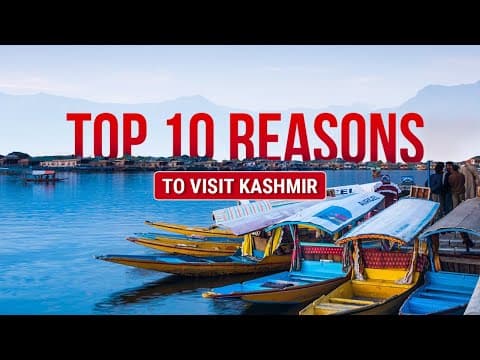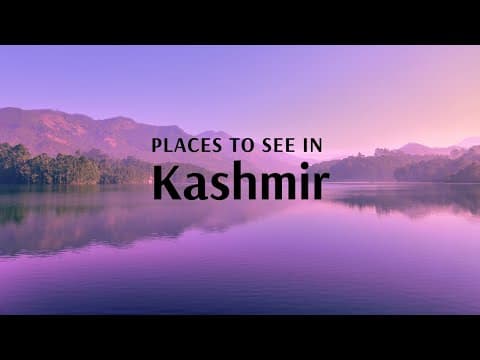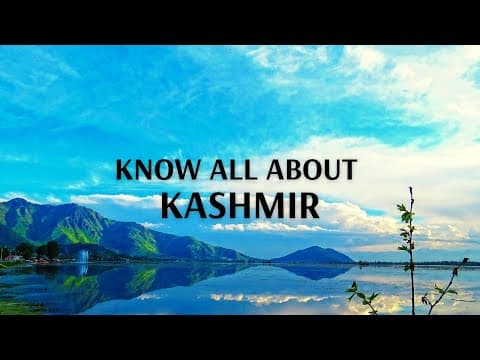Videos and Guides

Kashmir Video
Kashmir Video

Kashmir Tour Packages
Kashmir Tour Packages

Know All About Kashmir With Flamingo
Know All About Kashmir With Flamingo
Tour Information
Inclusions
Exclusions
Payment Policy
- Initial deposit - Rs. 20,000/- per person to confirm you’re booking with us.
- 100% payment to be made at least 30 days before departure.
- Refer Payment Process details on Payment Procedure for more detail
Cancellation Policy
- 45 days or more prior to the departure Rs.10000
- 45-30 days prior to the departure 25% of the tour cost
- 30-15 days prior to the departure 50% of the tour cost
- 15-07 days prior to the departure 100% of the tour cost Or a “No Show” on the tour 100% of the tour cost
- RATES ARE DYNAMIC AND SUBJECT AVAILABILITY. IT WILL FLUCTUATE AS PER HOTEL INVENTORY, FESTIVAL PERIOD, PEAK DATES, CITY SOLD OUT DATES,ETC…..
- Transportation consider Garage to Garage as per valid kms. Extra kms rate will be direct payable by guest only.
- Given cost is estimated, based on lowest hotel rates existing as of now. We Don’t Hold Any Confirmation For Hotels. It’s Subject To availability at the time of booking. Any difference in cost shall be borne by Passenger.
- In Hill station places (like shimla , Manali , nainital , kausani , Munnar , Thekkady) the AC facility will not be there in the rooms.
- At some places & at some hotels the higher category rooms are there with AC but that will be possible with the supplement cost.
- The vehicle like tempo travelers are not of very good condition so rather opt for Innova.
- Check-in time at Hotel is 1400 Hrs & Check-out time is 1100 Hrs.
- Your tours and transfers are based on tour itinerary & not at disposal basis.
- Your Itinerary will be strictly on timings.
- Room Rates based on Standard Rooms. Supplement cost will be applicable for Valley Facing / higher category rooms.
- Breakfast will start from Day 2 of the itinerary.
- Services will be given in exchange of Original vouchers/Itinerary only.
- Portages and Driver Tips are extra
- Optional sightseeing has to be booked in advance on your own by paying an additional cost.
- There is No Refund for un utilized Service
- All cost are per person based on twin sharing
- Car cost is counted as per children & adults sharing a car
- On hilly areas the CAR AC will not work.
- During sightseeing the vehicle will go up to permissible point only, from that point any arrangement to be made all extra expenses shall have to be borne by the passengers.
- Extra bed in the room means only extra mattress.(no cot)
- Any govt. tax levied must be borne by the passengers only.
- Pre ponement of journey is not allowed. It will be treated as cancellation & accordingly the cancellation charges will be applicable.
- If accommodation is not available in the identified / specific hotel for the particular package tour due to reason beyond our control, we shall make our best efforts to shift the clients to hotel maintaining / having more or less the same standard. No complaint or claim shall be made by the client in this respect.
- If any airline is delayed or cancelled, Flamingo Transworld Pvt. Ltd. is not responsible for any compensation for hotels, meals, sightseeing or any other claim.
Dear Traveler,
We sincerely thank you for your interest in booking Tour to INDIA. As you know all tours may vary from destinations to destination. We wish to brief here certain procedures for booking and conditions on the tour to make your holiday memorable. We request you to book the tour only after complete reading and after full acceptance of our terms and conditions.
BROCHURE ACCURACY:
All information given in the Brochure / Itinerary / Sightseeing Tours are based on the information available at the time of publication. We reserve the right to change any brochure / itinerary before or after booking your tour due to any event beyond our control. In case if we will know about any changes before your departure we will update or communicate with you otherwise our Tour Manager or Local Representative will inform you of the changes on the tour. We have provided information to the best of our knowledge and we will not be held responsible for any inaccuracy in brochure.
HOW TO BOOK:
The booking procedure is as below;
1. Kindly fill our Booking Form and Submit Dully Signed.
2. Passport Copies of First and Last Page of All Passengers (All Passport Must be valid minimum 6 months valid from the date of your return and it’s solely passengers responsibility to check before submission. Any booking which has been action on nonvalid passport passengers are liable to pay any charges incurred due to the same.)
3. Deposit Amount: Rs.50000/- per person to secure your seat in the Tour and if booking is within 60 Days of Travel then deposit require as per the payment required on that particular date as per payment policy mentioned below.
4. Dully Signed Terms and Conditions of Booking.
ABOUT PURE VEGETARIAN & JAIN MEALS:
The people in Kerala are mostly Non Vegetarian & majority of food is cooked in Coconut Oil. All good & best hotels, serves both Non-Vegetarian & Vegetarian food. It is difficult to get a hotel serving pure vegetarian only. We will put request at the hotels to provide Pure Vegetarian & Jain meals to the guests at the time of confirmation.
Note: The Jain food provided will not be of the standard, available in Mumbai & Gujarat. The food provided will be pure vegetarian meals which will not include onion, potato, garlic etc and things which are grown underground. Moreover, there will be very limited menu for Jain Meals.Kindly note this in advance to avoid any confusion and last minute crisis.
PLEASE READ BEFORE TRAVELLING:
-
The proposed packages are valid for Indian nationals only
Indian Nationals:
1. Original Election’s ID card /Adhaar Card/License/Passport
2. School Photo ID Proof of the child below 12 yrs along with Original Date of Birth Certificate.
3. Copy of the flight tickets.
PAYMENTS AND OPTIONS FOR PAYMENTS :
Payments are accepted in Indian Rupees only. Payments can be made by Cheque, Bank Transfers, Demand Drafts, Cash and Credit Cards.
1. Copy of PAN Card is required if Payment is made by cash and is more than Rs.50,000/- per person.
2. If you are paying by Credit Card 1.70% of the amount paid by the card will be charged additionally on and above the tour cost.
PAYMENT POLICY PER PERSON:
-
Initial deposit - Rs.30,000/- per person to confirm you’re booking with us.
-
100% payment to be made at least 30 days before departure.
Please note that all Travel Documents for the Tour will be released only on the receipt of full payment clearance in our accounts.
CANCELLATION CHARGES PER PERSON:
All services such as Airline seats / Hotel accommodation / ground transportation are pre-blocked well in advance. We are liable to pay penalties to all our suppliers / vendors if these services are released within the below mentioned time frame.
If circumstances make you cancel the tour, the cancellation must be intimated to us in Writing. Such cancellation will attract the following cancellation.
Cancellation Charges per person when a cancellation is made:
45 days or more prior to the departure Rs.25,000
45-30 days prior to the departure 50% of the tour cost
30-15 days prior to the departure Or a “No Show” on the tour 100% of the tour cost
Find a branch near you :
201/202, Gala Business Centre, St. Xaviers College Corner, Off C. G. Road, Ahmedabad 380 009, Gujarat, India. | Monday to Saturday | Time : 10:30 AM to 07:00 PMAhmedabad380009Gujarat India
